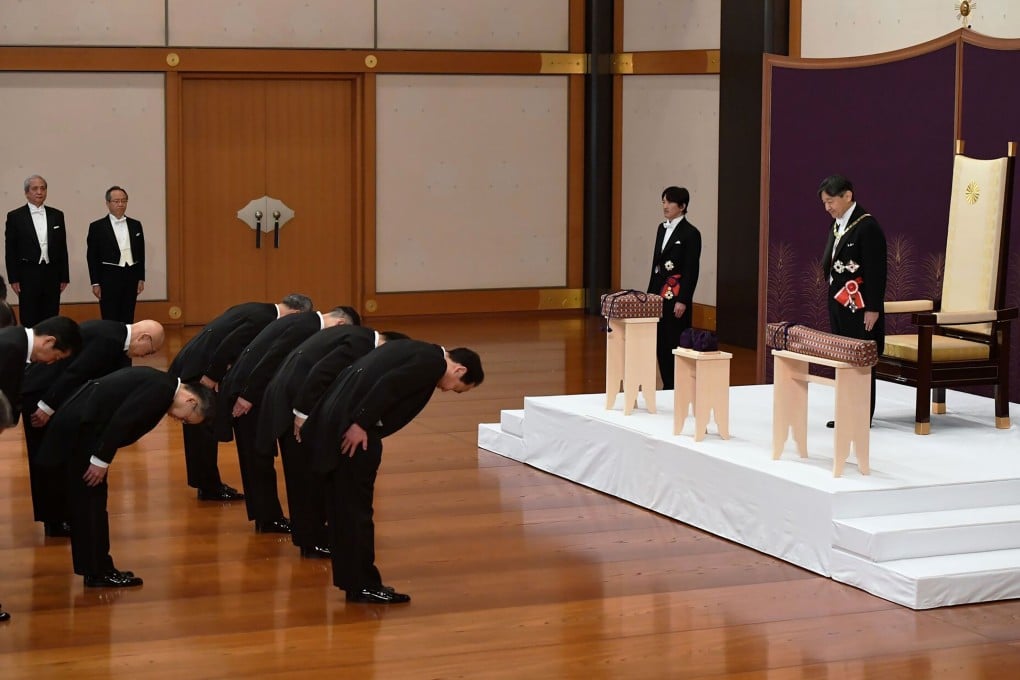A sword, a jewel and a mirror: what are Japan’s Sacred Treasures handed over to Emperor Naruhito?
- Together, these three items represent the valour, wisdom and benevolence that the emperor displays towards his people
- No one other than the emperor and the most senior priests of the Shinto religion have ever seen them

The ceremony that formalised Naruhito’s ascension involved the new emperor taking possession of Japan’s imperial regalia: three Sanshu no Jingi or Sacred Treasures shrouded in secrecy.
The Kusanagi sword and the Yasakani no Magatama jewel were presented to Naruhito, encased in wooden boxes, by the imperial household’s most senior chamberlains. The third treasure, the Yata no Kagami mirror, remains at the Ise Grand Shrine, the most important sanctuary of the Shinto religion, in Mie Prefecture.
Together, these three items represent the valour, wisdom and benevolence that the emperor displays towards his people. No one other than the emperor and the most senior priests of the Shinto religion have ever seen them.
According to myth, the regalia has been part of the enthronement ceremony for a new emperor since the year 690 but previously belonged to Amaterasu, the legendary sun goddess. Amaterasu was forced to hide in a cave from her brother, Susanoo, the powerful god of storms, extinguishing the light.